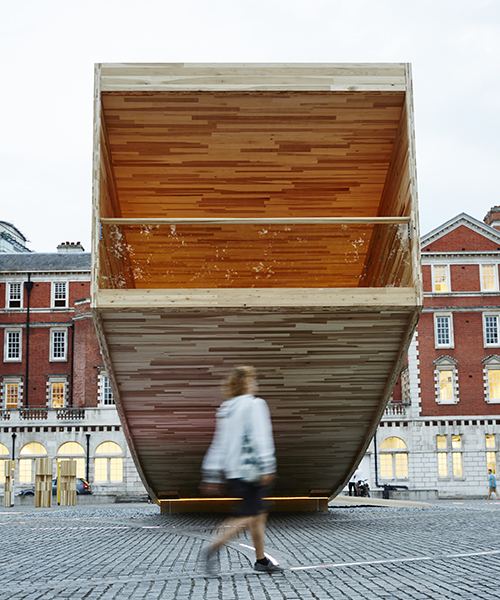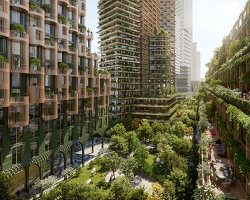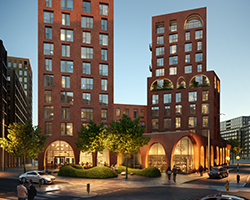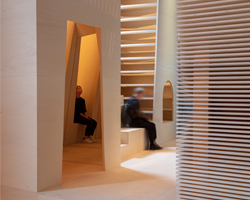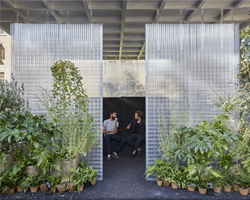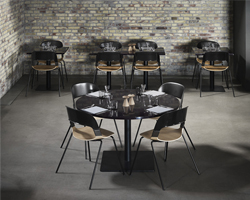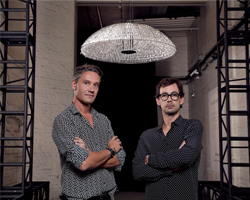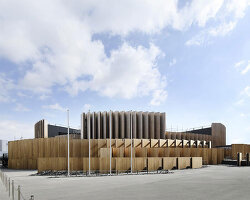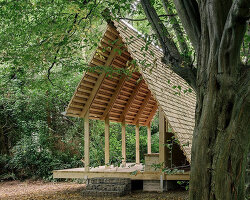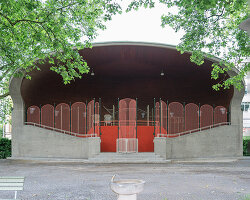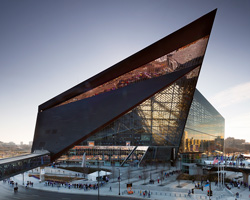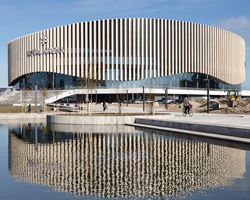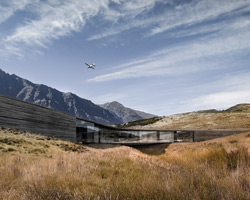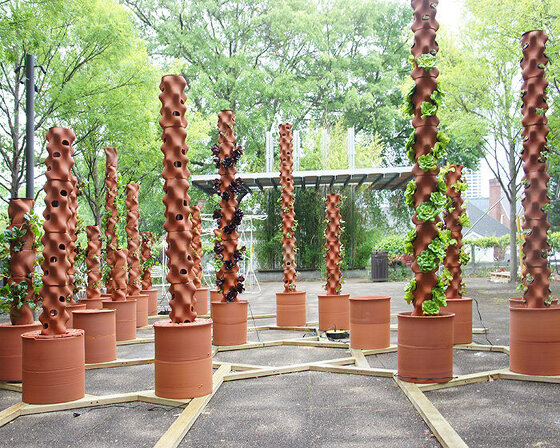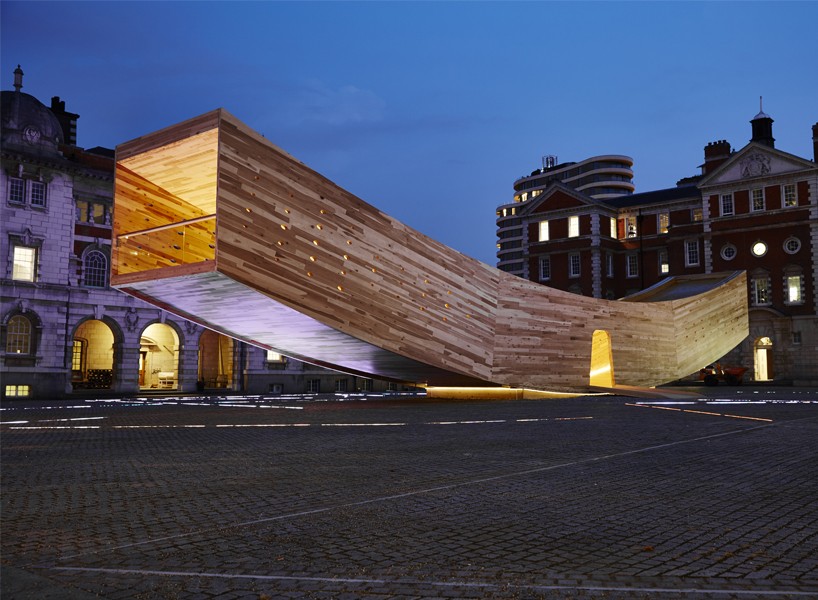 ‘the smile’ installation by alison brooks architects is an attractive and interactive landmark monument created for the 2016 london design festival. together with the american hardwood export council (AHEC) and arup, the collaboration has resulted in a spectacularly curved, tubular structure made from cross-laminated tulipwood (CLT). on display from the 17th september to 12th october, designboom was present for the preview opening of the festival’s highlight project.
‘the smile’ installation by alison brooks architects is an attractive and interactive landmark monument created for the 2016 london design festival. together with the american hardwood export council (AHEC) and arup, the collaboration has resulted in a spectacularly curved, tubular structure made from cross-laminated tulipwood (CLT). on display from the 17th september to 12th october, designboom was present for the preview opening of the festival’s highlight project.
UPDATE: alison brooks architects won the ‘display – completed buildings award’ for the smile at the 2017 world architecture festival.
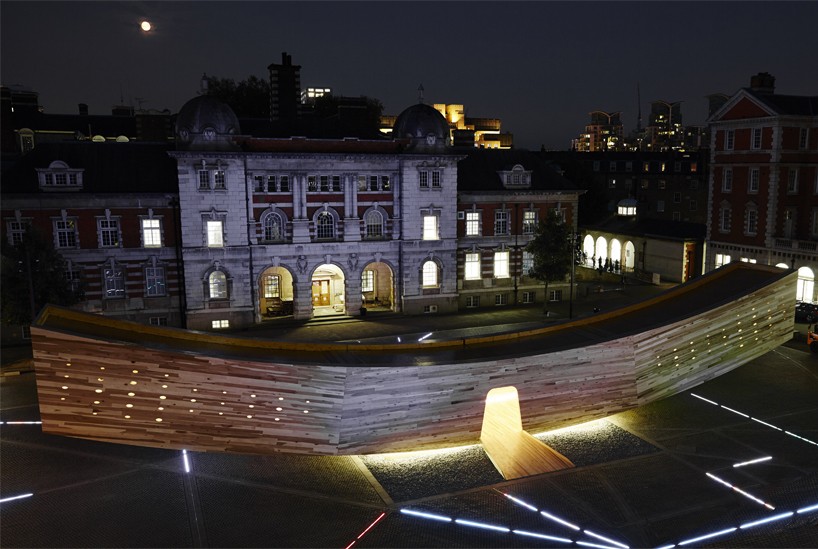
after dark, the smile emits beams of light from each end, elongating the structure
‘this is a beam profile that works very well in tension and compression to achieve long spans. by making this CLT ‘tube’ into the shape of an arc at a huge scale, the plates form a dynamic, sensory space to inhabit. the result is a building that cantilevers from a single point in the centre. one of the most amazing qualities of the smile is the thin-ness of the majority of its wall and floor panels – only 100mm thick. it’s an autonomous and self-supporting piece of architecture that touches the ground lightly’, explained alison brooks, creative director of alison brooks architects.
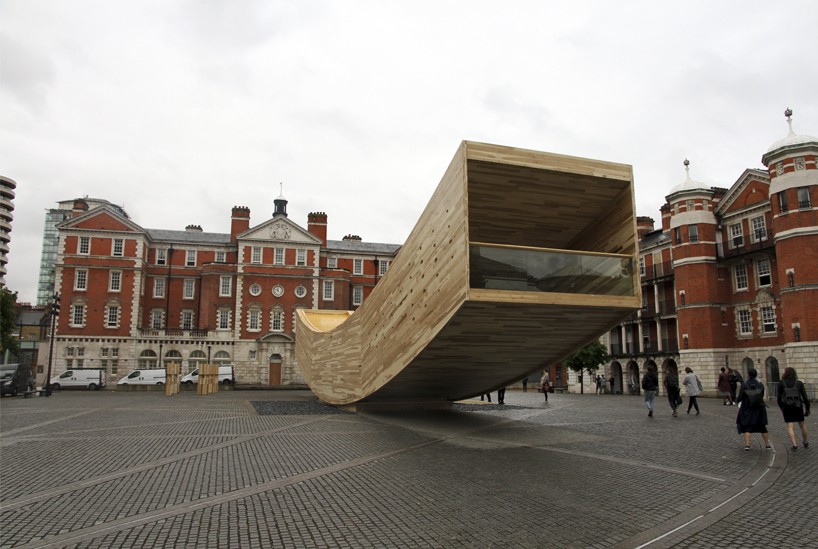
it is the first ever mega-tube made with construction-sized panels of hardwood CLT
image © designboom
measuring 3.5m high, 4.5m wide and 34m long, as alison quite rightly stated, ‘the smile’ is ‘more than an installation, its architecture’. the curving beam showcases the structural and spatial potential of cross-laminated american tulipwood, by enabling visitors to walk up to both sloping ends. much like two balconies, these tops are open, illuminating the interior space and providing people with great vantage points to look over the city. when inside the building at night, linear strips guide the public up and down the arc.

it creates sheltered spaces under its cantilevered arms
image © designboom
‘the smile’s form implies that it will rock. so the form itself is an invitation to test whether the pavilion moves, and how it feels to walk in on a curved floor. a single door and ramp from the square invites visitors to enter – something like our archetypal image of noah’s ark. inside the door light spilling from the ends of the arc will invite you to walk up the slope of the curve to balconies at either end, rather like looking out from the rail of a ship’, added alison, when describing the installation’s engaging and interactive aspects.
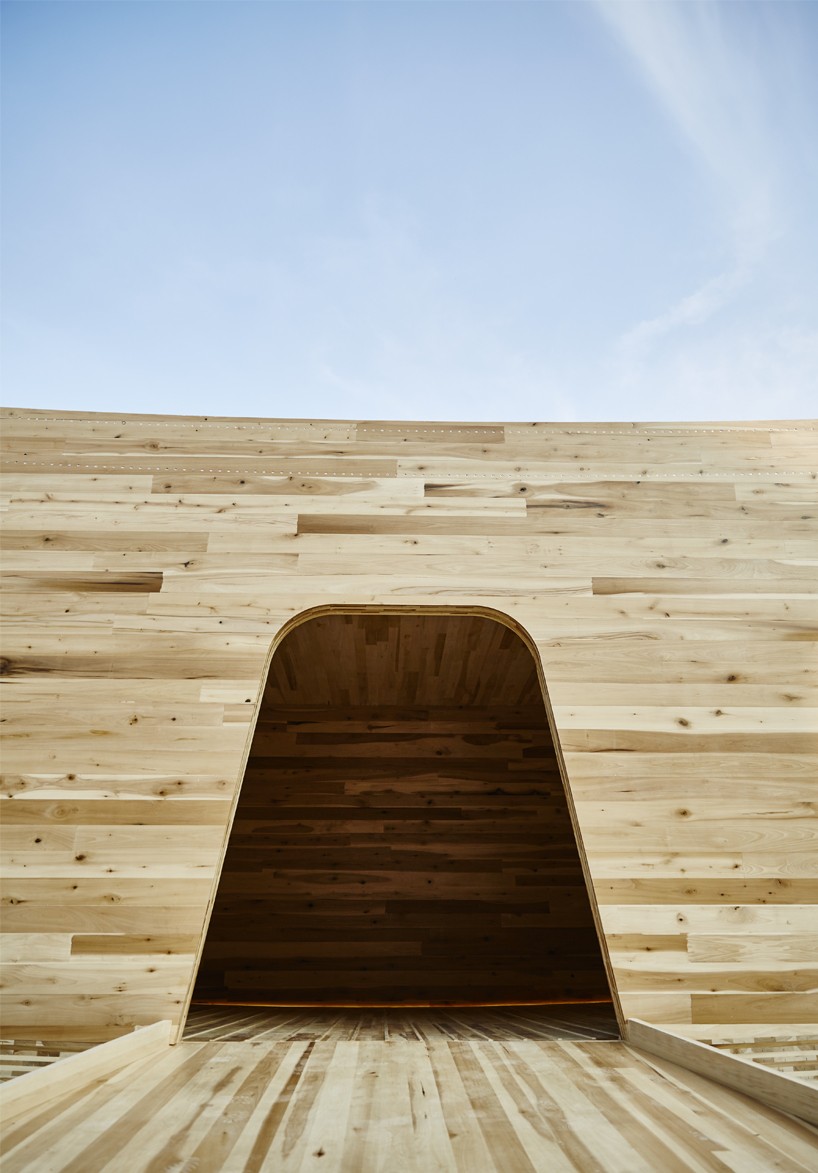
the arc’s entrance
she went on to mention that, ‘the pavilion’s walls are perforated with oval holes, measuring between 12cm and 20cm. these allow daylight to filter in and track across the interior space throughout the day. the holes are placed in the parts of the CLT walls under the least amount of strain, a kind of structurally expressive ornament. after dark the smile will emit beams of light from each end, elongating the structure. it has a playful quality – between a landscape structure and a building – and it creates sheltered spaces under its cantilevered arms.’
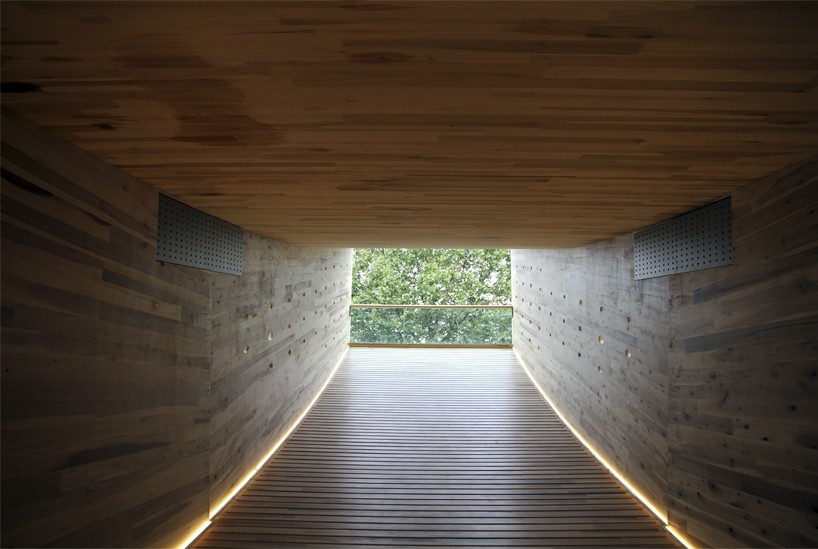
looking up at the east balcony from the smile’s center
image © designboom
as covered by our preview feature, the temporary urban installation by alison brooks architects, is the first ever mega-tube made with construction-sized panels of hardwood CLT. the engineering feat uses a layered construction, where the wood fibers are turned at right angles for each successive level. this manufacturing innovation has led to the entire structure being composed of just 12 huge tulipwood panels and 6,000 long screws. its use of materials has transformed the archaic arc shape into a world’s first and an icon for this year’s london design festival.
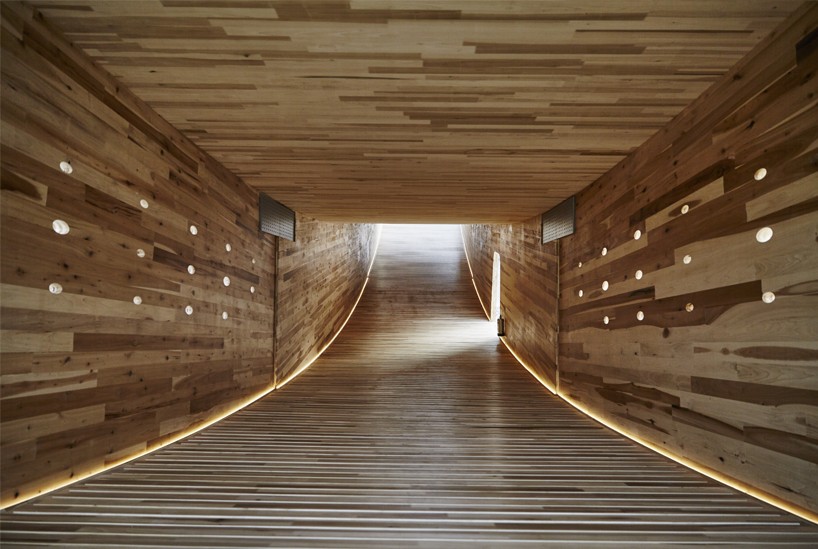
the public are invited to walk up the pavilion’s slopes
‘the smile’ by alison brooks architects with AHEC and arup, is open for visitors from the 17th september to 12th october at the chelsea college of arts. follow our coverage of the 2016 london design festival here.
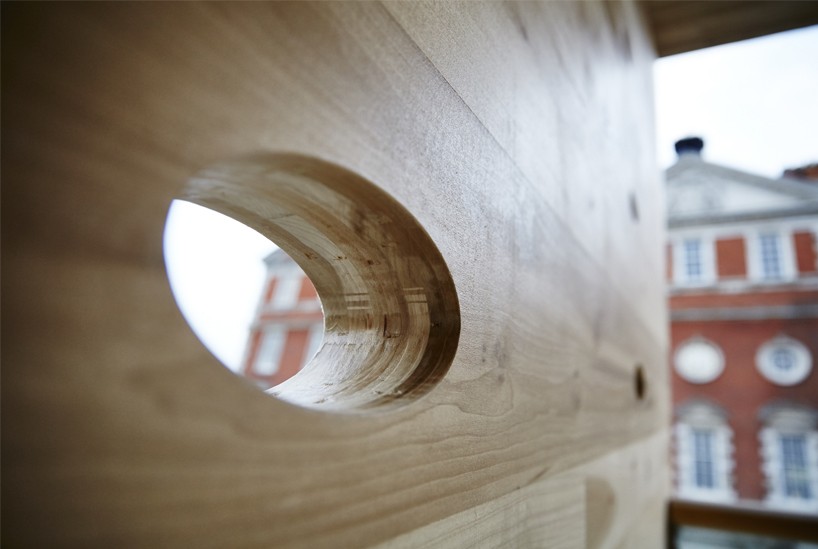
the walls are perforated with oval holes

visitors can follow the linear lights up the beams

the engineering feat uses a layered construction to create such a strong structure
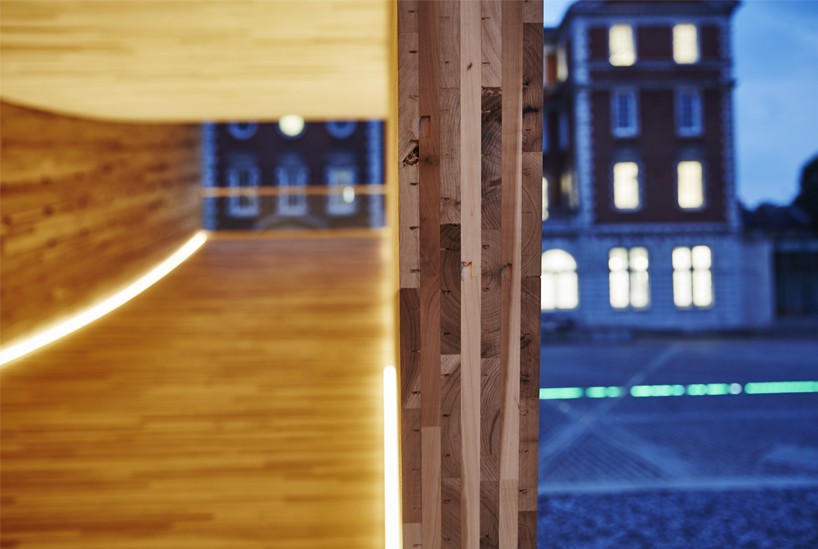
the walls are floors are only 100mm thick
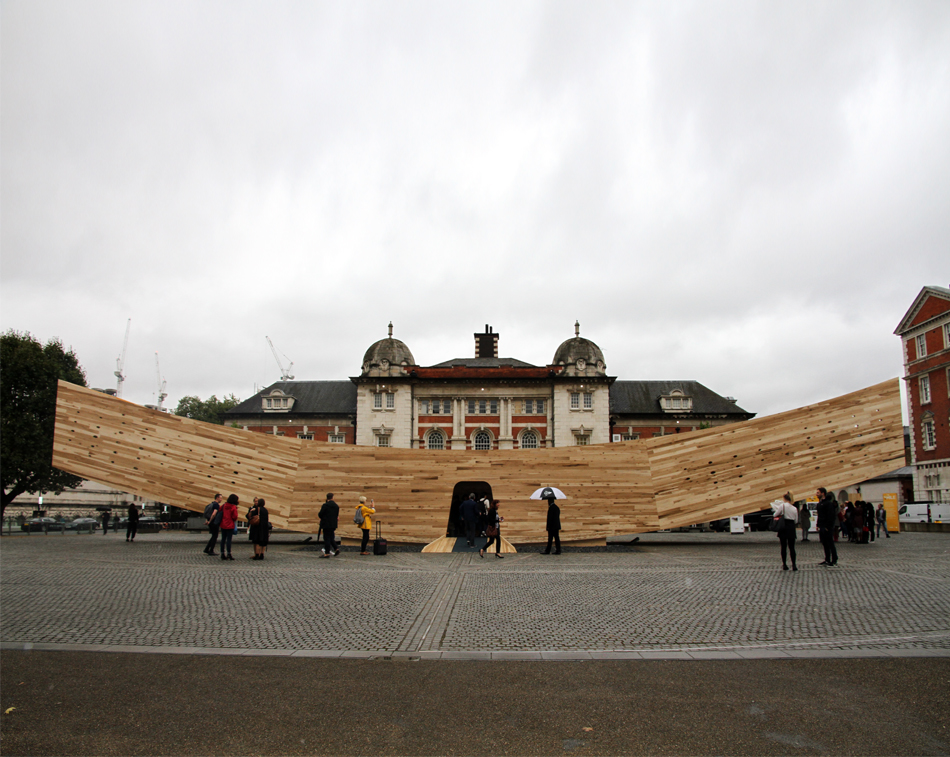
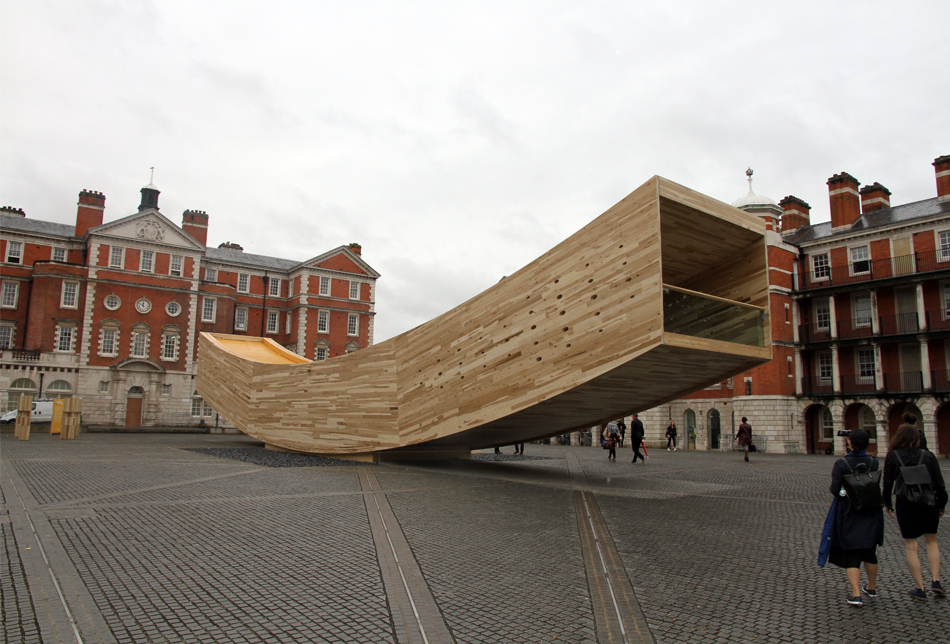






Save
Save
Save
